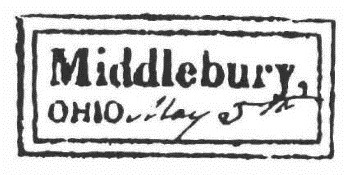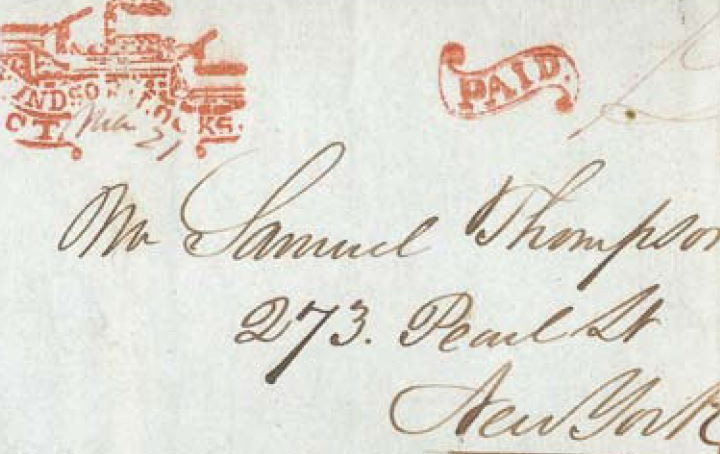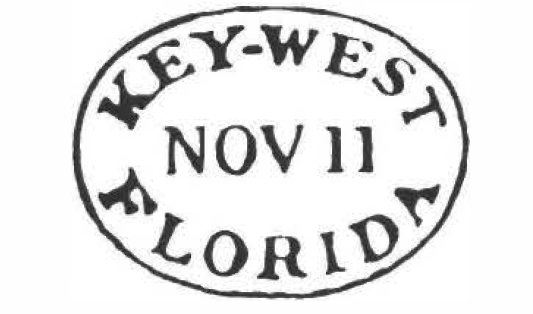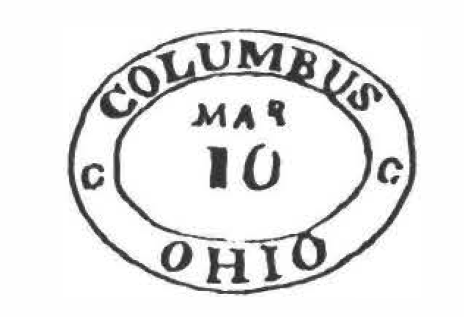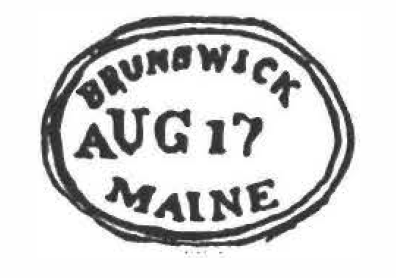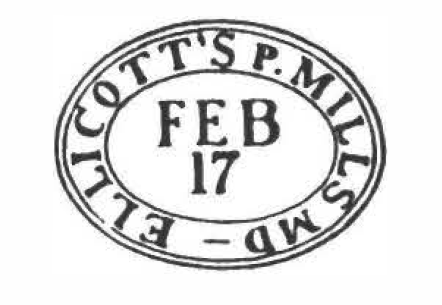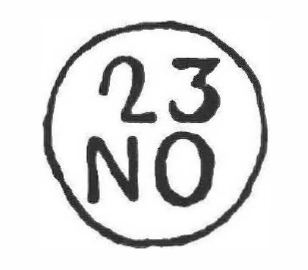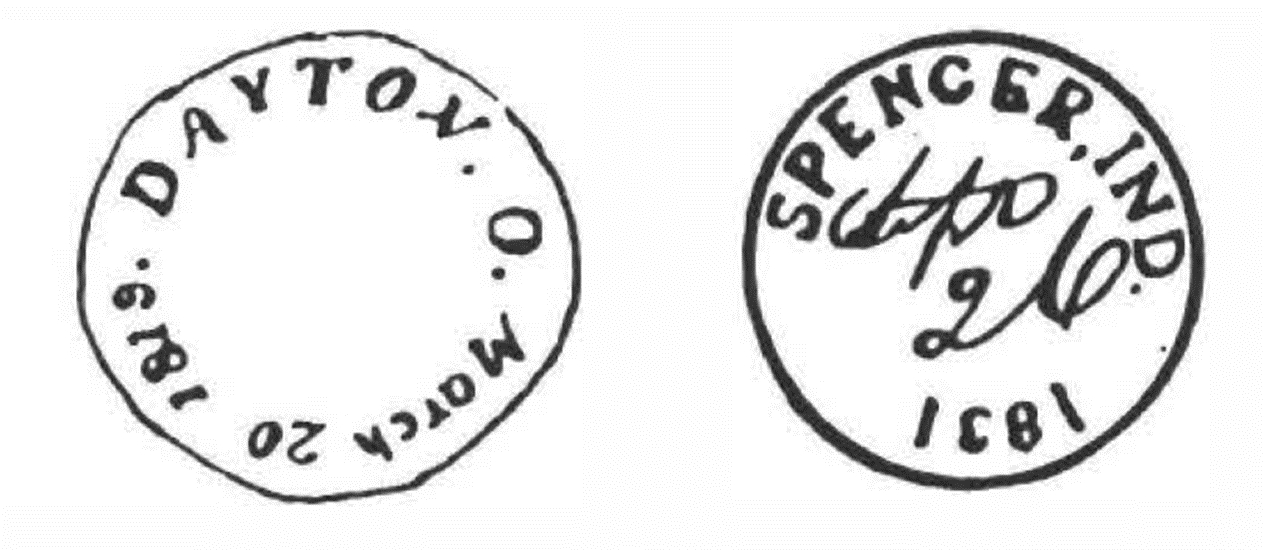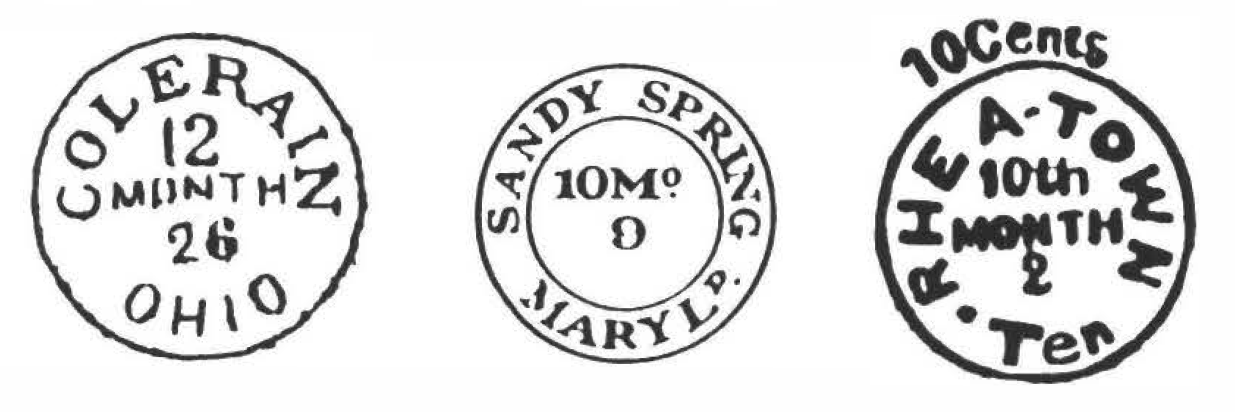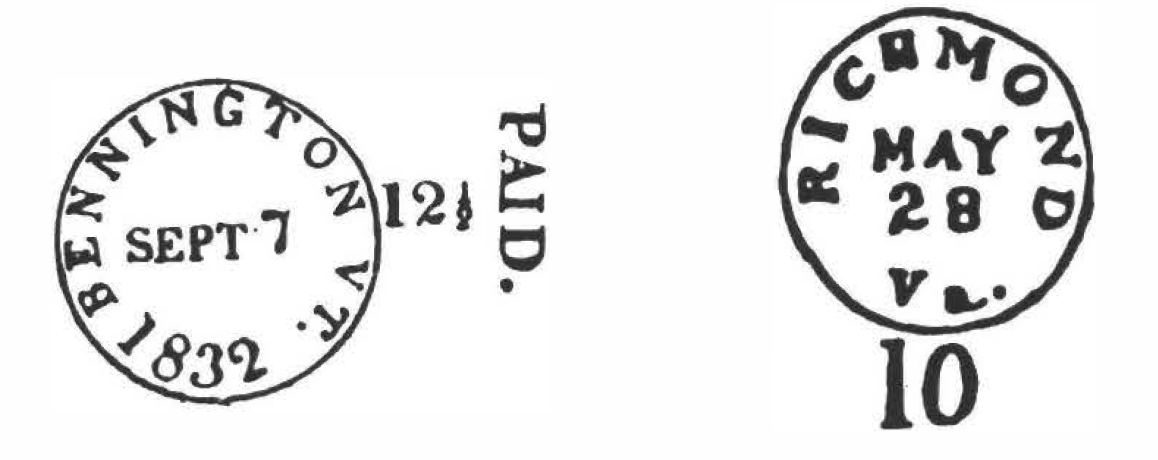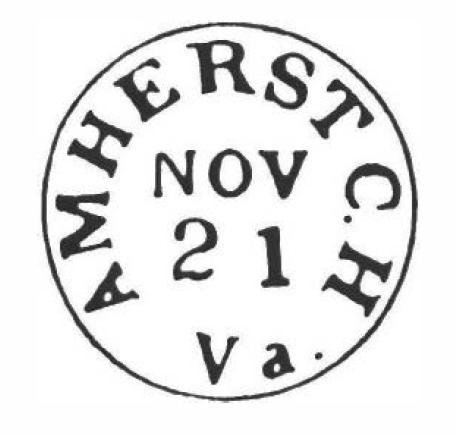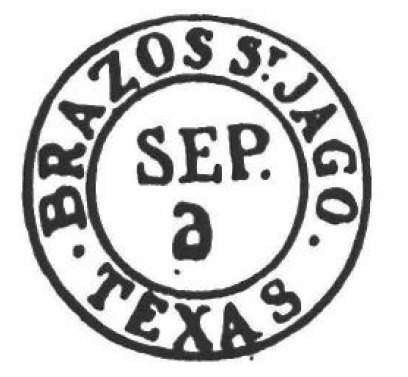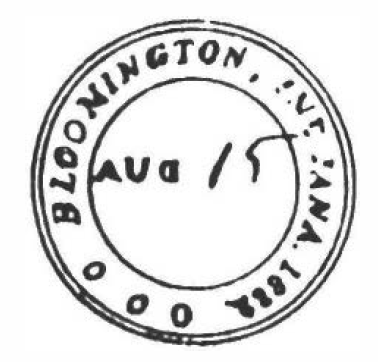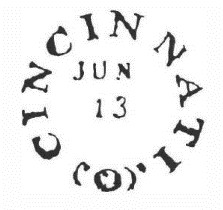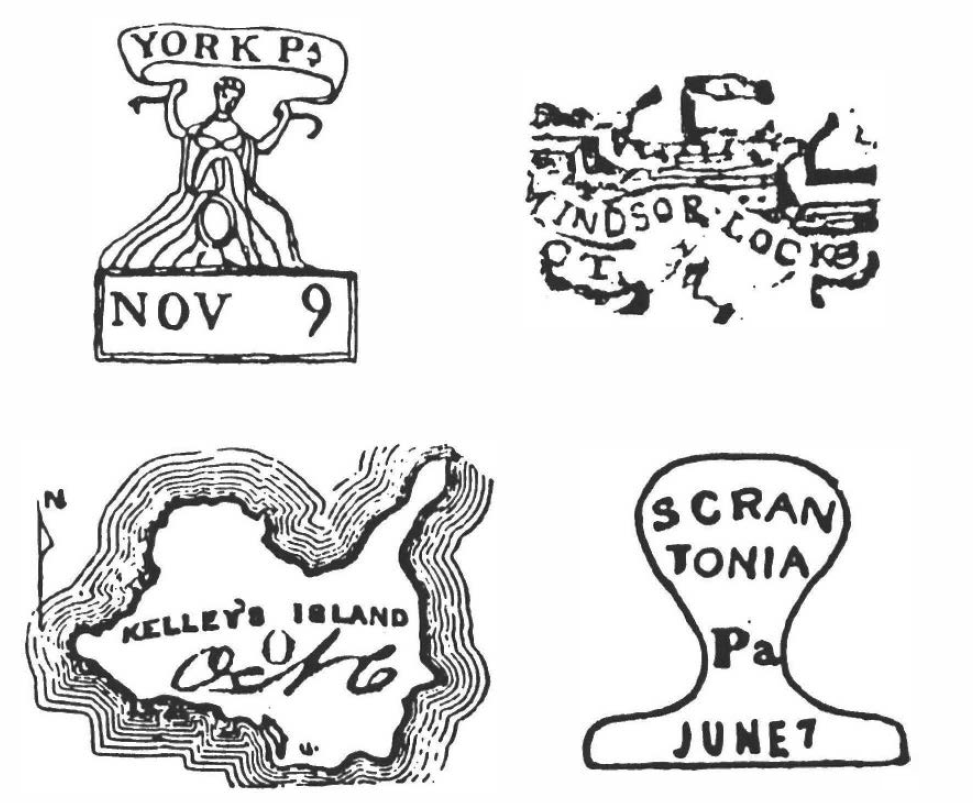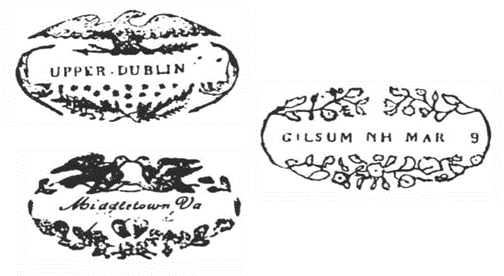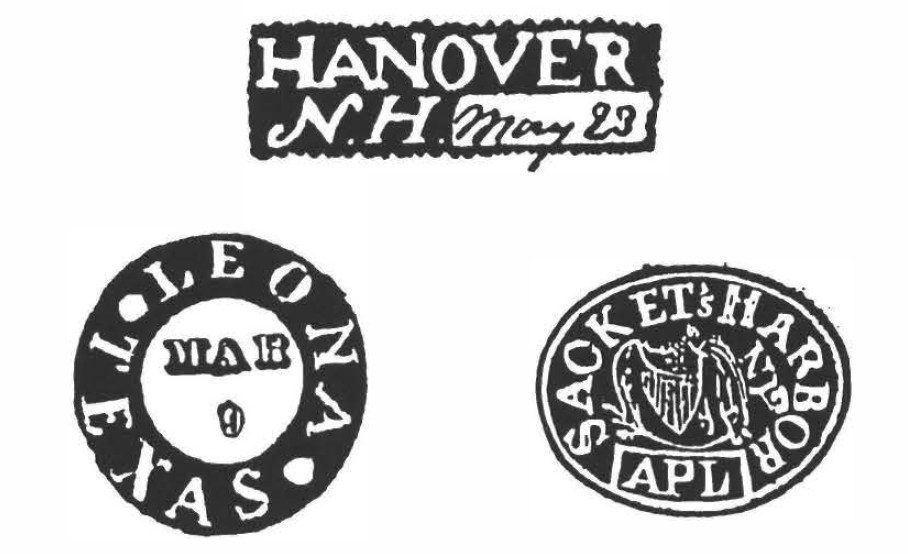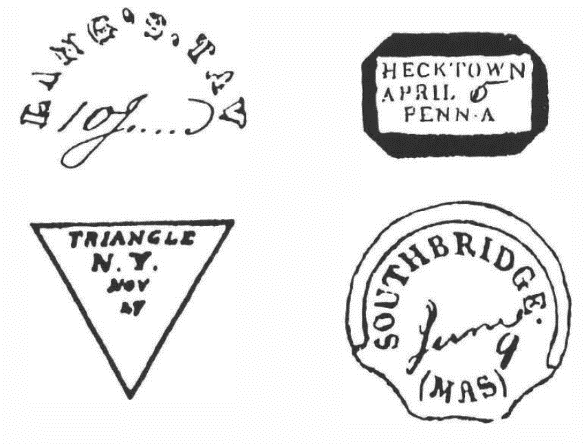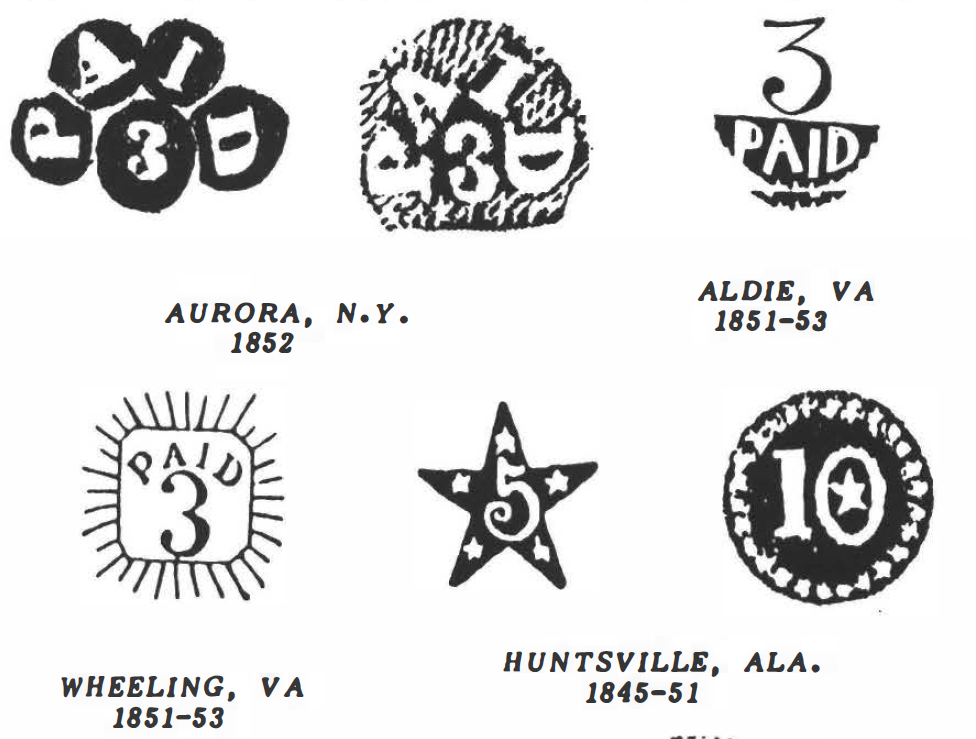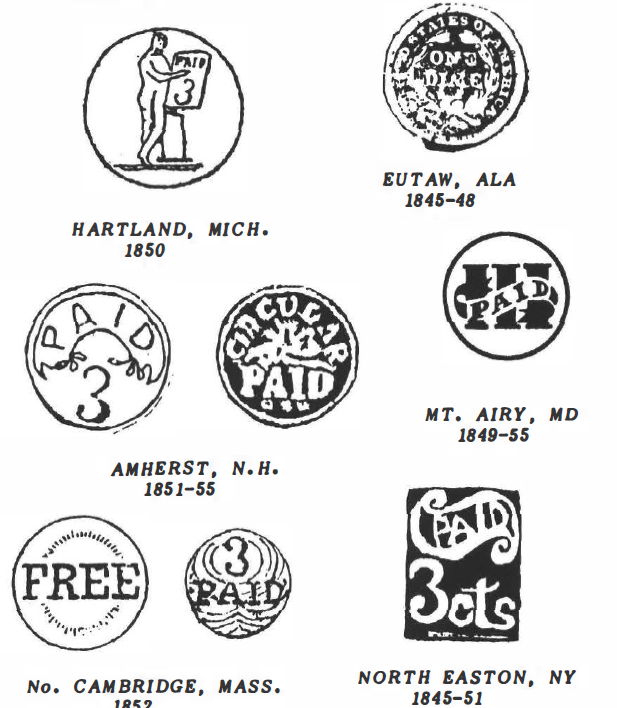The earliest handstamped townmarks applied to stampless covers were straight line markings, usually fashioned from printer's type and generally without any boxed frame lines or ornamentation. Frequently, the date appears alongside the town name, and it is not uncommon to find a separate straight line date marking used in conjunction with the town marking.
Certain type-set straight line markings show significant variations in type size, spacing, and punctuation .and these are recognized in the catalog listings --- see Fort Adams, Miss. Terr.; Nashville, Tenn.; and St. Louis, Mo., for typical examples. Minor varieties, presumably resulting from the replacement or cleaning of worn letters, minor type substitutions, etc., can be expected and may not be included in the listings. In later usage, straight line markings are often found boxed within framelines. In general, straight line markings were gradually replaced by the early circle types and oy ovals from about 1800 onward, although scattered examples are to be found as late as the 1860's.
The sizes of the straight line townmarks (measured in mm, the horizontal being first) include the town name plus star, period, or other such marks connected with the town name, but in no case is an additional straight line date included, as month-day and year dates vary in length. When the town
name appears in two lines the length of the longer line is shown and the height dimension includes both lines. Where 1ette.rs in the postmark vary in height the maximum d1mension is used.
A slash line (/) indicates the start of a new line.
SL - One, Two or Three Straight Lines:
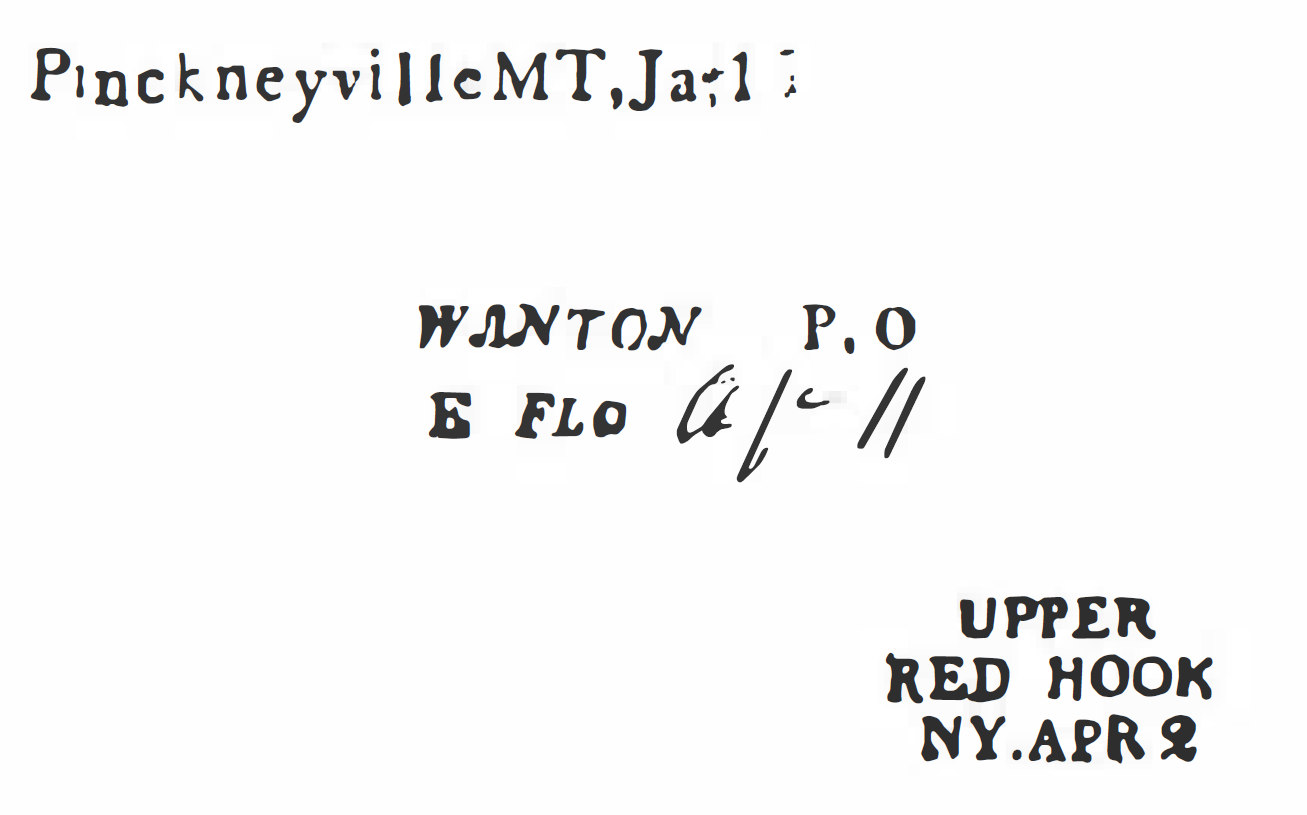
Box - Single Line Box
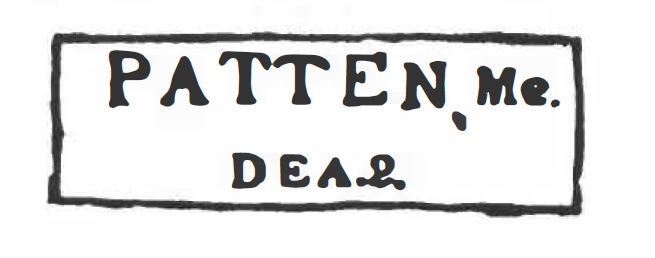
DL Box - Double Line Box
